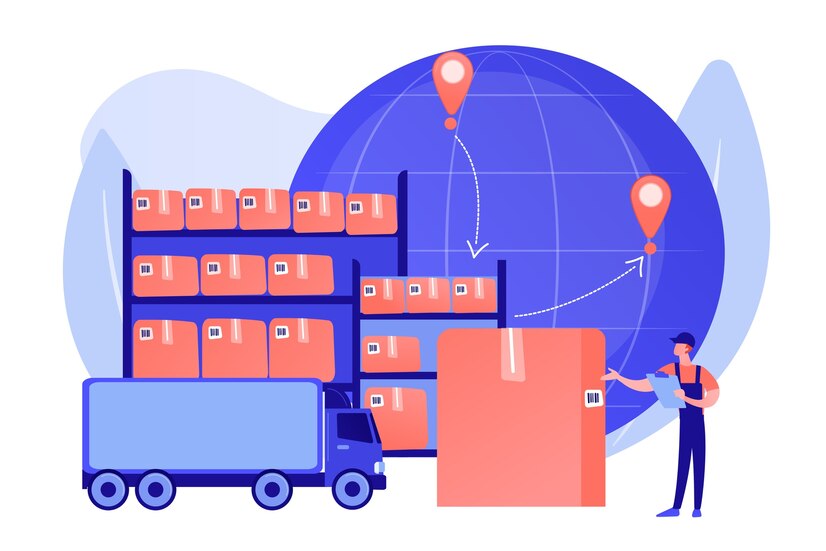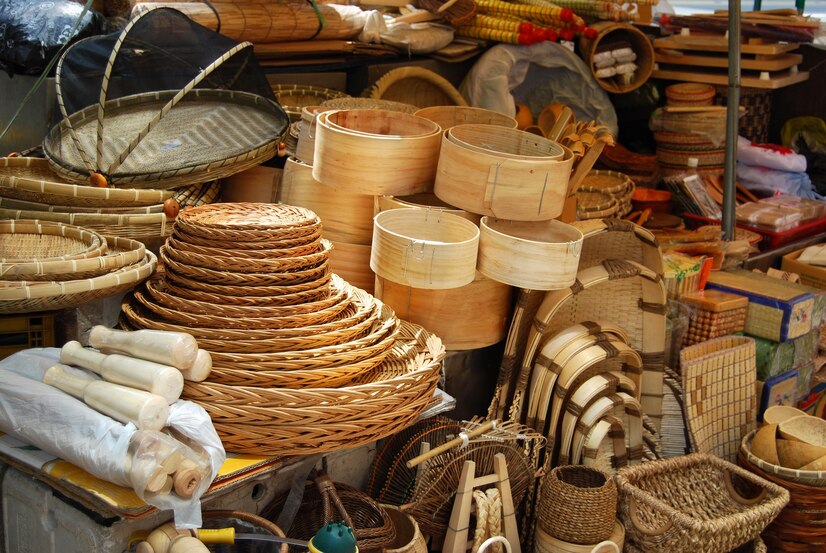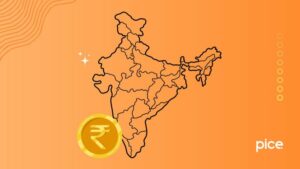Understanding the MEIS Licence Sale GST Rate: A Comprehensive Guide
- 20 Sep 24
- 14 mins

Understanding the MEIS Licence Sale GST Rate: A Comprehensive Guide
Key Takeaways
- The Merchandise Exports from India Scheme (MEIS) aimed to enhance the global competitiveness of Indian exports by compensating for high shipping costs and taxes.
- MEIS consolidated various export incentive programs into one, simplifying the process for exporters to receive incentives.
- The scheme provided duty credit scrips ranging from 2% to 5% of the export value, usable for customs duty payments on imports.
- MEIS covered a wide range of products and aimed at market-oriented growth, identifying high-potential export markets and products.
- The Service Exports from India Scheme (SEIS) complemented MEIS by offering incentives for the export of notified services, thereby promoting the Indian service sector on a global scale.
In 2015, the Indian government made the Merchandise Exports from India Scheme (MEIS) a key part of the Foreign Trade Policy (FTP) 2015–2020. Its main goal was to get Indian goods and services exported so that they could compete better on world markets. The plan was meant to make up for inefficient infrastructure and the high costs of shipping goods from India, which would increase Indian exports.
Background to MEIS: Laying the Foundation for Export Growth

Genesis and Evolution: At the time that the MEIS was created, India desperately needed to boost its export industry. Before MEIS, there were a number of other export-boosting programs, such as the Focus Product Scheme (FPS) and the Market Linked Focus Product Scheme (MLFPS). MEIS merged these programs and took their place. The goal of this unification was to make it easier for exporters to get incentives.
Objective and Mechanism: The main goal of MEIS was to make up for the money that shippers lost because of high taxes and freight costs. Duty credit scrips were used as rewards under the plan. These scrips were given out based on the product that was exported and the place where it was sent.
In most markets, these scrips were worth between 2% and 5% of the FOB (Free On Board) value of exports. They could be used to pay customs taxes on imported goods, which helped exporters save money on the cost of raw materials and other inputs.
Scope and Coverage: MEIS covered a broad spectrum of products and markets. It was designed to be market-oriented, with a focus on countries where India was competitive in terms of exports. The scheme identified high-potential markets and products that could enhance India's export capabilities, thereby contributing to the overall growth of its export sector.
Understanding MEIS
The MEIS covered a wide array of products, categorized under different sectors to streamline the process of identifying eligible goods and their corresponding benefits. These categories were meticulously outlined in the FTP, with regular updates and notifications to include or exclude products based on various economic factors and trade negotiations. The categorization under MEIS was broadly divided as follows:
- Agricultural and Food Products: This category included a wide range of agricultural produce and processed foods, aiming to boost India's agricultural exports by making them more competitive in the global market.

- Handicrafts, Carpets, and Textiles: Recognizing the labor-intensive nature of these sectors and their importance in India's export portfolio, MEIS provided incentives to these categories to enhance their global appeal and market penetration.
- Engineering and Electronic Goods: With the aim of promoting India as a manufacturing hub, this category covered various engineering goods, including machinery, auto components, and electronic items.
- Chemicals and Pharmaceuticals: Given the global demand for chemicals and pharmaceuticals, MEIS incentives for these products aimed to make Indian exports in these sectors more competitive.
- Leather and Leather Products: This category aimed to boost the export of leather goods, a sector where India has a significant competitive advantage due to its extensive raw material base.

- Gems and Jewelry: As a major foreign exchange earner for India, the gems and jewelry sector was also covered under MEIS to enhance its competitiveness and market share globally.
If you want to pay your GST with Credit card, then download Pice Business Payment App. Pice is a one stop business payment app for all business related payments.
MEIS/SEIS Licenses – A Complex Scenario for Exporters
MEIS applications for export service
The main goal of the Merchandise Exports from India Scheme (MEIS) was to encourage Indian companies to send their goods abroad by giving them tax credit stickers as rewards. You could pay customs fees on things that were brought in with these scrips, or you could sell them on the open market. The plan was meant to make Indian exports more competitive on the world market by fixing inefficient infrastructure and lowering the costs of sending goods abroad.
On the other hand, MEIS doesn't specifically cover services. The Service Exports from India Scheme (SEIS) is a different program that helps Indian companies sell services. Since SEIS gives duty credit slips for eligible exports, it was created to support and boost the export of notified services from India.
Service Exports from India Scheme (SEIS):
Objective: The main objective of SEIS is to encourage and promote the export of notified services from India by providing duty credit scrips to the exporters.
Eligibility: SEIS applies to service providers located in India who are providing notified services to entities outside India. To be eligible, the service providers must have an active Importer Exporter Code (IEC) and provide one of the notified services that qualify under the scheme.
💡Notified Services: The scheme covers a wide range of services across sectors such as business, health, education, tourism and travel, recreational, professional, and transport services. The specific services eligible under SEIS are detailed in the Foreign Trade Export Policy.
Benefits: Under SEIS, the government grants export duty credit scrips to service exporters. The rate of rewards varies between 3% to 7% of the net foreign exchange earned, depending on the type of service provided. These scrips can be used to pay for a wide range of duties, including basic customs duty and safeguard duties, and can also be freely transferred or sold.
Application Process: If service exporters want to get SEIS benefits, they have to fill out an online application through the DGFT site. To back up the claim, the application must be supported by the necessary paperwork, such as bank certificates of foreign exchange earnings.
After January 1, 2021, the Remission of Duties and Taxes on Export Products (RoDTEP) plan took over for the MEIS. This is important to keep in mind. The RoDTEP plan aims to return the duties, taxes, and levies collected at the national, state, and local levels. These are fees that aren't returned by any other export promotion plans at the moment.
If you want to know about the newest schemes for exporting services, such as any improvements or changes to SEIS or the creation of new schemes, you should check out the official DGFT website or talk to a trade expert.
Is GST applicable on sale of MEIS license?

The sale of MEIS licenses (duty credit scrips) has been a subject of debate regarding the applicability of GST. Initially, there was ambiguity, but clarifications provided by the government have shed some light on this issue. According to the Central Board of Indirect Taxes and Customs (CBIC), the sale of MEIS licenses is exempt from GST. This exemption is crucial as it affects the liquidity and the financial planning of exporters who rely on selling these scrips in the open market as part of their revenue stream.
Can GST be Charged While Providing Services Abroad?
When it comes to providing services abroad, the GST framework categorizes such transactions as "zero-rated supplies." This means that while the services exported are not subject to GST, exporters are allowed to claim refunds on the input tax credit (ITC) for taxes paid on inputs used to provide these services. This provision ensures that services intended for consumption outside India do not bear the additional cost of GST, thereby making Indian service providers more competitive in the global market.
Navigating the Complexities
Exporters need to navigate these complexities with a clear understanding of the regulations to maximize their benefits under MEIS and SEIS while ensuring compliance with GST laws. Here are a few key points for exporters to consider:
- Documentation and Compliance: Maintaining thorough documentation and ensuring compliance with the specific requirements of MEIS and SEIS is crucial for claiming benefits without any hiccups.
- Understanding GST Implications: Exporters should stay informed about the latest GST regulations affecting the sale of MEIS/SEIS licenses and the provision of services abroad to manage their finances effectively.
- Consultation with Experts: Given the complexities and the evolving nature of trade policies and tax laws, consulting with tax experts and trade advisors can provide exporters with the insights needed to navigate these challenges efficiently.
Ineligibility of Benefits Under MEIS
While MEIS was broad in scope, certain exports and exporters were deemed ineligible for benefits under the scheme. Understanding these exclusions is essential for exporters to ensure compliance and avoid any potential issues. Key ineligibilities included:
- Exports through Trans-shipment: Goods that were exported through third countries (trans - shipment) without being processed or value-added in those countries were typically ineligible for MEIS benefits.
- Export of Imported Goods: Direct exports of imported goods without any substantial value addition in India were not eligible for incentives under MEIS.
- Supplies made to SEZ/FTWZ Units: Goods supplied to Special Economic Zones (SEZs) or Free Trade and Warehousing Zones (FTWZs) were not eligible for MEIS benefits, as these zones are deemed to be outside the customs territory of India for the purpose of trade operations and duties.
- Items Subject to Minimum Export Price (MEP): Products that were subject to Minimum Export Price (MEP) conditions or any form of export restriction were generally excluded from MEIS benefits.
- Service Exports: MEIS was specifically designed for merchandise exports. Service exports were covered under a different scheme, the Service Exports from India Scheme (SEIS).
Reversal of ITC in case of MEIS/SEIS sales
In India's Goods and Services Tax (GST) system, it is complicated when it comes to the return of Input Tax Credit (ITC) when MEIS (Merchandise Exports from India Scheme) or SEIS (Service Exports from India Scheme) scrips are sold. The purpose of both MEIS and SEIS was to encourage exporters by giving them tax credit scrips. These could be used to pay customs duties on imported goods or sold on the open market.
Anti Dumping Duty
The Indian government puts tariffs on foreign goods that are sold in their own country for less than what they are worth. These are called anti-dumping fees. The word for this is "dumping." It is the main goal of anti-dumping duties to protect India's industries from unfair competition and make sure that imports don't hurt Indian producers too much.
If a company sells things in India for less than it does in its home market, it can hurt Indian businesses a lot because they might not be able to compete with the cheaper imports. This could make domestic businesses suffer, which could mean job losses and a general decline in the health of the industry.
Conclusion
The creation of MEIS was in reaction to the urgent need to boost India's export sector. It combined earlier programs to make an easier-to-understand and more effective system for encouraging exporters. By giving tax credit scrips based on the FOB value of exports, MEIS directly helped to lower the costs for exporters, which made Indian goods more competitive on the world stage.
The plan covered a wide range of goods, from food and agriculture to electronics and engineering. The goal was to make Indian exports more appealing to buyers around the world and to increase the variety of goods that India exported.
The MEIS categorization was carefully thought out to focus on areas where India had a competitive edge or where there was a lot of room for growth. This smart grouping made it easier for Indian goods to get into high-potential markets, which helped India's export sector grow as a whole.
The scheme's focus on market-based rewards also showed that the government was serious about making India's exports more in line with the way global trade works.
 By
By 


















